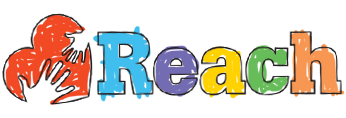-
Applied behavior analysis (ABA) is defined as “the science in which tactics derived from the principles of behavior are applied to improve socially significant behavior and experimentation is used to identify the variables responsible for the improvement of behavior.” Among the various popularized treatments for autism, only applied behavior analysis relies exclusively on tactics which have been proven
Care philosophy
Behavioral interventions represent the root of our philosophy. Our program focuses on skill development using methodologies which are data driven and evidence based. Rather than assume what children cannot do, we observe what they do so that we can support and encourage them to do more than they ever imagined.
Additionally, we operate on the philosophy that learning should be safe, joyful, and functional. We strive to provide an environment that is both physically and emotionally safe. Children are cared for in a nurturing environment that encourages growth.
Every child is given an opportunity to develop communication, social, leisure skills, and prevocational skills. Community involvement and family support are integral the program.
Methodology
Stichting REACH Holland is a care center focused on using evidence-based strategies to promote progress in skill areas such as communication, adaptive behavior, and skills of daily living. To that end, we use strategies derived from the science of behavior to promote learning. These strategies are referred to as applied behavior analysis or ABA.
An applied behavior analysis program focuses on observable measurable behaviors in order to teach socially significant goals. Each client’s skills and deficits are individually assessed to determine these goals. Using the Assessment of Basic Language and Learning Skills (ABLLS-R) skills in the areas of communication, imitation, play and leisure, and daily living are assessed. Families are also involved in the goal selection process so that these goals will be supported and so that these goals will reflect the culture and interests of the family.
Program
The skill development program is based on results from the Assessment of Basic Language and Learning Skills (ABLLS-R). Additional communication goals are developed from the Generative Language Matrix. Pre-vocational and leisure skills are also addressed in group activities such as music, art, yoga, technology and gardening.
Applied behavior analysis
Within an applied behavior analysis program, complex skills are broken down into small and manageable steps. Each student’s goals are addressed through structured programming using positive reinforcement strategies to meet objectives at each step toward that goal.
The research behind our philosophy
Behavioral intervention is well-supported in over 30 years of research on autism spectrum disorder and its treatment. Intensive behavioral intervention, accompanied by parent training has been established as an effective treatment in several studies. Early intensive behavioral intervention with children under the age of 3 has been demonstrated an effective treatment for children with autism, leading to success in mainstream environments in some cases. However, this intervention has been also demonstrated effective for school age children, even when behavioral intervention begins between the ages of 4 and 7. Among the factors that increase the success of a program are structured programming, as well as parent involvement, which are a cornerstone of the philosophy at REACH.
It is important to note that, while results of behavioral intervention can be success in mainstream environments, that is not the only positive outcome. Even for those who are not yet able to succeed in mainstream environments, successful outcomes are possible in other ways. Using applied behavior analysis programs, children can learn independently use the bathroom, develop social and play skills, and communicate using vocal language, sign language or other augmentative communication
- Home
- About Reach
- -- Meet Team Reach
- -- News
- -- Reach organisation
- -- What you can expect from us
- -- Parents
- -- Target audience
- -- Complaints procedure
- -- Holiday schedule
- -- What is ABA?
- ---- ABA fact and fiction
- Reach Us
- -- Friends of Reach
- -- Referrals
- -- HKZ – Certificatieschema – Kleine Organisaties
- -- ANBI
- -- Donate
- Nederlands
- -- Contact
- -- Over Ons
- -- Doorverwijzing
- -- ABA feit and fictie
- -- ANBI
